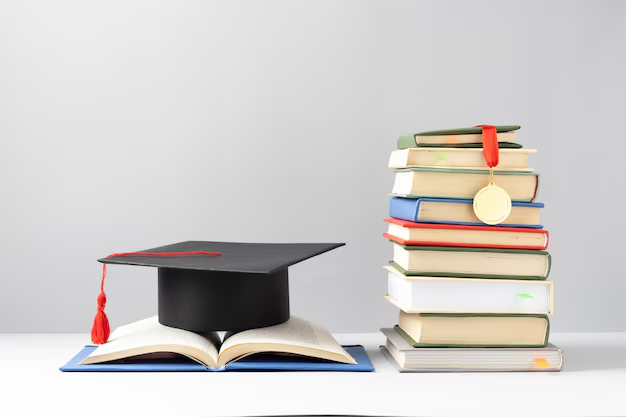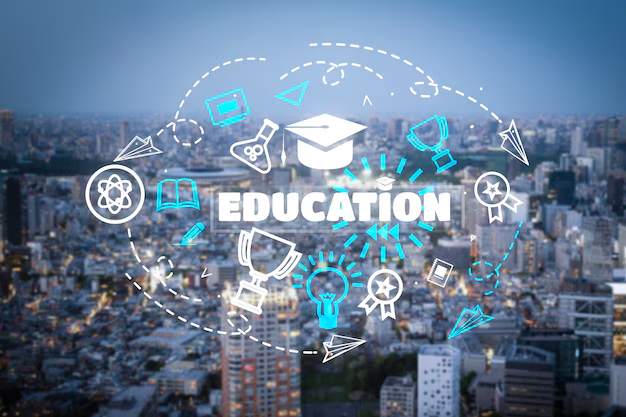Education, in its many forms, has undergone significant transformations throughout history. From the days of oral traditions passed down through generations to the digital classrooms of the modern era, the evolution of education has reflected broader societal shifts, technological advancements, and changing attitudes toward learning. Understanding how education has evolved helps us appreciate the current landscape and envision the future of learning.
This article explores the journey of education, highlighting key milestones, transformations, and the technologies that have shaped how knowledge is imparted and received over the years.
Early Education: Oral Tradition and Written Word
In the earliest stages of human history, education was not a formalized process. Knowledge was passed down orally, with elders, priests, or tribal leaders sharing wisdom, traditions, and survival skills with younger generations. Stories, songs, and rituals were vital in transmitting cultural knowledge, and this method of teaching was deeply connected to a community’s identity and values.
As civilizations advanced, the written word became a powerful tool for preserving and disseminating knowledge. Ancient societies such as the Egyptians, Sumerians, and Greeks used papyrus, clay tablets, and scrolls to record information. In ancient Greece, the concept of formal schooling emerged, with the famous philosopher Socrates using dialogue to engage students and encourage critical thinking. Education was largely reserved for the elite, with access to learning being limited to the wealthy or privileged.
The Middle Ages: Religious Education and the Rise of Universities
During the Middle Ages, much of education in Europe was dominated by religious institutions, particularly the Catholic Church. Monasteries and cathedral schools became centers of learning, where monks and priests would transcribe texts, study religious doctrine, and provide instruction in subjects like Latin, theology, and philosophy. However, education was still primarily reserved for men, and few had the opportunity to pursue learning beyond basic religious education.
By the 12th and 13th centuries, universities began to emerge in major cities like Bologna, Paris, and Oxford. These institutions became centers of higher learning, offering courses in a range of subjects, including law, medicine, and the arts. Universities like these laid the foundation for modern higher education and played a key role in the intellectual revival of the Renaissance period.
The Renaissance and Enlightenment: The Birth of Humanism and Public Education
The Renaissance (14th to 17th centuries) was a pivotal time in the history of education. The revival of interest in classical Greek and Roman texts brought a focus on humanism—an intellectual movement that emphasized the value of individual experience, reason, and education. Thinkers like Leonardo da Vinci, Galileo, and Descartes revolutionized the way people viewed the world, encouraging a more scientific and rational approach to learning.
During this time, education began to move beyond the confines of religious institutions, and an increasing number of wealthy families began to provide formal schooling for their children. The printing press, invented by Johannes Gutenberg in the 15th century, played a significant role in the spread of knowledge, making books and educational materials more accessible to a wider audience.
By the 18th century, the Enlightenment further transformed education. Thinkers such as John Locke and Jean-Jacques Rousseau argued for the importance of reason, individual rights, and the role of education in shaping a just society. This period also saw the rise of public education systems, particularly in Europe, where governments began to establish schools for all children, regardless of social class.
The Industrial Revolution: Mass Education and Standardization
The Industrial Revolution of the 18th and 19th centuries marked a dramatic shift in education. As industrialization transformed economies, there was an increased demand for a skilled and literate workforce. Education became essential for people to work in factories, offices, and other modern industries. This period saw the establishment of more formalized and standardized education systems.
In the United States and many European countries, compulsory education laws were passed, requiring children to attend school. The school model became more structured, with a focus on reading, writing, and arithmetic. Education became a tool for social mobility, with the promise of improved economic opportunities for those who gained skills and knowledge through schooling.
At the same time, the curriculum began to expand to include subjects like history, geography, science, and foreign languages. The structure of education also became more formal, with an emphasis on grading, testing, and assessments that are still in use today.
The 20th Century: Progressive Education and Technology Integration
The 20th century brought about significant changes in educational philosophy and practice. Progressive education, championed by figures like John Dewey, emphasized experiential learning, critical thinking, and the development of a child’s individuality. This was a departure from the traditional, rote learning methods of the past and sought to foster creativity, curiosity, and problem-solving skills.
The rapid advancement of technology also had a profound impact on education. The introduction of radios, televisions, and computers in classrooms began to change the way information was delivered. Educational television programs, such as “Sesame Street,” helped to teach children basic skills through entertainment, while computers and the internet provided new avenues for accessing information and communicating with others.
By the late 20th century, the internet revolutionized education, providing access to online learning materials, digital libraries, and communication platforms. Distance learning, once a novel concept, became an increasingly popular way for students of all ages to pursue education remotely.
The 21st Century: Digital Learning and the Future of Education
In the 21st century, education has entered a new era characterized by digital technology and online learning. The internet has become a central hub for information, and digital tools such as laptops, tablets, and smartphones are now ubiquitous in classrooms worldwide. Learning management systems (LMS) and online courses, like those offered by platforms such as Coursera, Khan Academy, and edX, have democratized access to education, making it possible for anyone with an internet connection to access quality learning resources.
Moreover, artificial intelligence, virtual reality, and gamification are beginning to transform the educational experience, offering personalized learning, immersive simulations, and interactive environments that engage students in new ways. With the rise of MOOCs (Massive Open Online Courses), learners can access courses from top universities and institutions without leaving their homes.
FAQs about the Evolution of Education
- How has education changed over the years? Education has evolved from informal oral traditions to highly structured systems, incorporating advances in technology and changes in educational philosophies.
- What was the role of religion in early education? In the Middle Ages, religious institutions, particularly the Catholic Church, played a central role in education, with monasteries and cathedral schools being the primary centers of learning.
- How did the Industrial Revolution impact education? The Industrial Revolution led to the establishment of formal, standardized education systems to meet the demand for a skilled workforce, with compulsory education laws emerging.
- What was the impact of the printing press on education? The printing press made books and educational materials more widely available, leading to the spread of knowledge and the democratization of education.
- How has technology changed education in the 21st century? Technology has revolutionized education by providing digital resources, online courses, and interactive learning tools that enhance engagement and accessibility.
- What is the role of progressive education? Progressive education emphasizes experiential learning, critical thinking, and individuality, in contrast to traditional, rote methods of teaching.
- What is the future of education? The future of education is likely to be characterized by further technological advancements, including artificial intelligence, virtual reality, and personalized learning experiences.
Conclusion
The evolution of education has been marked by profound changes driven by cultural, technological, and societal shifts. From oral traditions to online learning platforms, education has continuously adapted to meet the needs of society. As we move forward, the integration of new technologies and innovative teaching methods will continue to transform the educational landscape, offering exciting possibilities for future generations.
Key Takeaways
- Education has evolved from informal, oral traditions to formalized schooling systems.
- The Industrial Revolution and the rise of technology have been key drivers in shaping modern education.
- Technology, including the internet, AI, and virtual reality, is playing an increasingly important role in education today.
- Education will continue to evolve, offering more personalized, accessible, and immersive learning experiences in the future.



